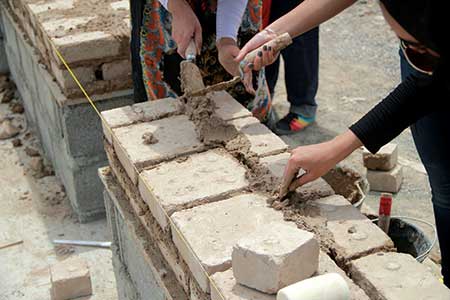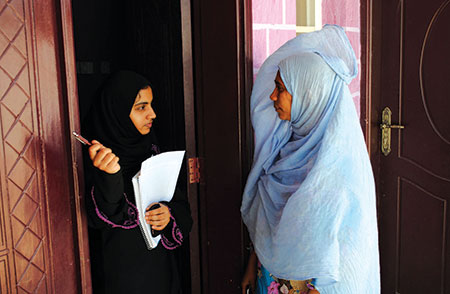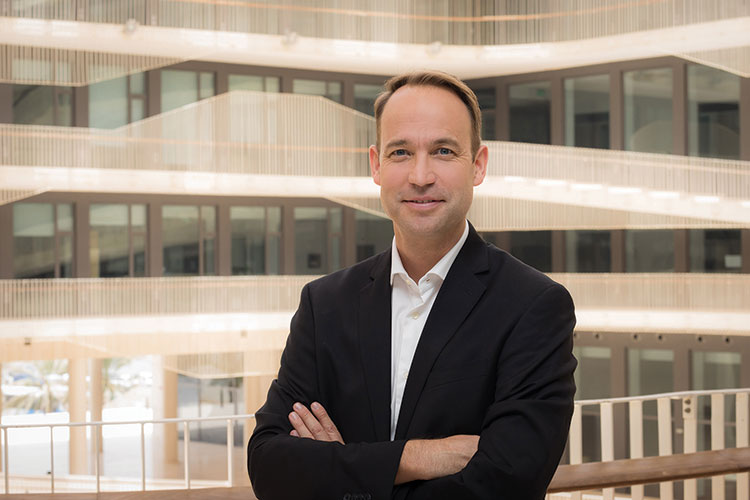When in conversations with people, the talk comes to my profession and when I say that I am an architect and educator of architects, I often hear the same reaction. People say, “I would have liked to study architecture, but I didn’t dare to do it because I am not good at drawing.” I always wonder why it is that this one skill – being able to draw – is perceived as so essential for an architect when actually it is not. Through my 15 years of teaching architects I realised that a much more varied set of skills needs to be trained in order to be able to capture the complexity of this profession.

I joined the German University of Technology (affiliated to RWTH Aachen) almost ten years ago and a summary of my approach to teaching architects in undergraduate courses is now published as a book titled ‘Ten Projects on Educating Architects in Oman’. The book has ten chapters, each of which is titled by a verb that stands for one of the many skills that an architect needs to master, besides drawing.
FIND is about sensing the peculiarities of a place. Since architecture is inextricably bound to a place, no design can be successful without sharpening all senses to become aware the many phenomena that makes a place. My students start their study programme in the landscape, for example on the rocks and sands of the city’s coast, where they have to highlight the qualities of a place by building a small inhabitable space with very simple means – just sticks or sand or cloth. This is an architectural experience as direct as it can be.
PLAN is the daily work of an architect. And despite the many verbs mentioned here, the basics of planning need to be learned. At GUtech, the planning skills were trained in the development of row houses, which would be a much more energy- and space-efficient typology of housing in Muscat.
TRY is the mode in which designers operate. Since there is not one fixed formula or standard operating procedure for how we develop solutions, it is important to try out many different methods of designing. One such occasion was a summer school that we held together with the Architectural Association from London, the hotbed of creative architecture. The result was a temporary outdoor exhibition.


MAKE is about primary experiences of using, mixing and joining materials. We set up a building yard on our campus where our students can build in real scale with real materials so that they know what they are talking about when later in their education and careers they draw construction details.
ENGAGE is a project to broaden the social consciousness and people skills of students. Architecture is about improving people’s lives. Through the cooperation with a local charity organisation my students had the opportunity to engage in a social housing project where the first step is not sketching fancy ideas but listening to people in need of adequate shelter.
BUILD is the experience of seeing what was designed on paper becoming a real building. For the EcoHaus project, a pioneering zero-energy building in Oman, students and graduates were involved from the beginning; they contributed to the design, participated in planning and took over responsibility in supervising the site until the completion of the building.


EXPLORE describes an urge to roam around and look behind the scenes of things. Without this curiosity about places and people no new ideas would come up. We take our students around the region to visit the relevant traditional and current projects in Oman, Dubai, Al Ain, Abu Dhabi, Doha and sometimes we just take them on a walk around the corner because there is so much to discover in the most mundane everyday situations.
SENSE is an exercise that gives all freedom to the student to design a project that he or she finds relevant for this time and place. It turns the table of teaching and learning and puts the student in a position to actively come up with a problem statement and not to just passively fulfil a submission. In the real world architects need to be able to invent their own commissions.
REFLECT is what makes a novice become an expert. Learning to design is one thing, but being able to reflect about what it actually is that we are doing when we design is another. Through reflecting on the design process a novice becomes an expert.
ENVISION is the skill to foresee future trends and apply them on current plans. This is especially necessary when working with heritage sites where the vision to find solutions needs to go forward and not backward. Our students developed visions for the oasis in Nakhal.
The book illustrates these projects and shows how broad the mindset of an architect need to become in order to develop solution in which, as the Italian historian Bruno Zevi said, ‘Architecture is just a stage for life.’


* Nikolaus Knebel is an architect and professor at the German University of Technology in Oman. After studying in Berlin, Singapore and Delft, he worked for Rem Koolhaas in Rotterdam, Toyo Ito in Tokyo and for the Bauhaus Dessau Foundation / GIZ in Addis Ababa, founded an office in Berlin and received several awards for built works in Germany. He is the team leader of the ongoing EcoHaus project at GUtech, a TRC-funded, award-winning, pioneering zero-energy-building that received – among many other awards – the ‘Best Sustainable Building Middle East & North Africa Interior And Architecture Design Award in 2015’. Nikolaus is also researching design didactics and is currently teaching a course in ‘Design Thinking’ to train students from all faculties of the university in creative problem solving.
(To purchase a copy of the book, contact nikolaus.knebel@gutech.edu.om)

